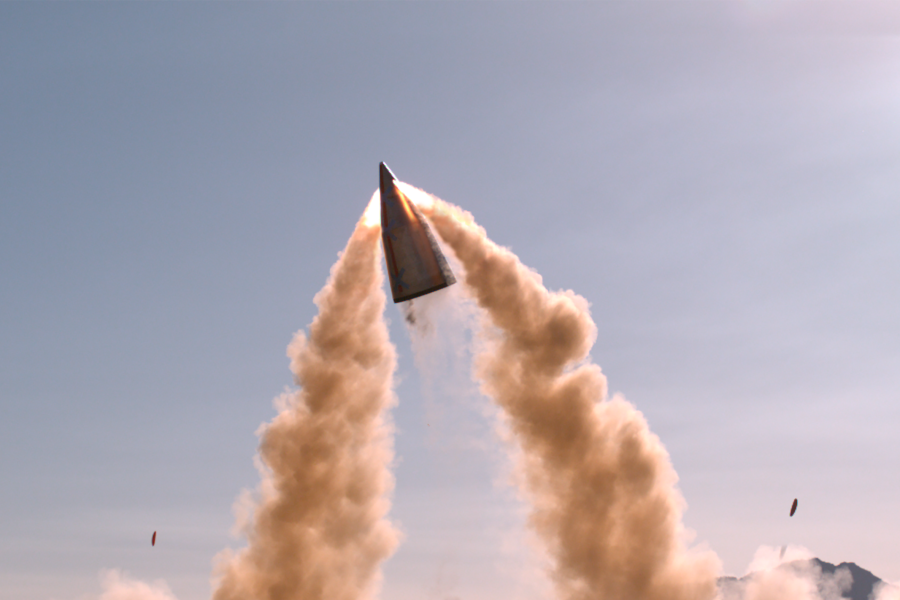Lawmakers are taking several steps toward increased oversight of the Sentinel intercontinental ballistic missile program after the Air Force announced earlier this year that it was suffering critical cost and schedule overruns—but there is little appetite to cancel or curb the program.
The cost sparked a Nunn-McCurdy review of the program, which pauses work and requires certification from the Secretary of Defense to continue. While that process likely won’t wrap up until July, several provisions in the 2025 National Defense Authorization Act approved by the House Armed Services Committee on May 22 look beyond that toward managing the program if and when it is approved to move forward.
HASC chair Rep. Mike Rogers (R-Ala.) led the charge in his markup of the bill, including a section that would require the head of U.S. Strategic Command to submit regular reports to Congress on the “long-term plan for strategic nuclear forces during vehicle transition.”
Those reports would have to include plans for the years 2028-2036, covering:
- “A baseline strategy for maintaining a minimum of 1,550 nuclear warheads” across the nuclear triad, including ICBMs.
- Operational considerations “including, as necessary, the identification of areas in which greater risk is being accepted.”
- Contingency plans if there is a “reduced strategic delivery system availability due to programmatic delays, aging, or other such factors.”
The last requirement is an apparent nod to the schedule delays both Sentinel and the Navy’s Columbia-class submarine have faced. Sentinel in particular has a “no-fail” initial operational capability deadline of September 2030 set by STRATCOM that it is close to breaching. Full operational capability is not slated until 2036.
The first required report would be due one year after the NDAA is enacted.
Elsewhere in the NDAA, the committee wants to require the Pentagon to provide it with a briefing and documentation from its Nunn-McCurdy review within one month of the Defense Secretary’s final decision. As part of that briefing, lawmakers want a “description of the alternative systems and capabilities considered, including road-mobile intercontinental ballistic missile capabilities, life extending one or more wings of the Minuteman III and deploying a mixed fleet of Sentinel and life-extended Minuteman III ICBMs for a period of time.”
On top of that, the committee is asking the Government Accountability Office to review the Pentagon’s Nunn-McCurdy review, to ensure “compliance with both letter and intent” of the law.

Air Force leaders have repeatedly said they are committed to continuing Sentinel despite the increased costs.
“Sentinel will be funded,” Lt. Gen. Richard G. Moore Jr., Air Force deputy chief of staff for plans and programs, said in January. The Air Force will “make the trade that it takes to make [Sentinel] happen. We’ll see as we work through this process what the results are, but we are committed to Sentinel and that [is] not going to change. It is funded now. And that’s also not going to change.”
“The primacy of the mission, I think, says a lot,” Air Force Secretary Frank Kendall said in February, adding that Sentinel is “essential.”
Just two weeks ago, Pentagon acquisition boss William LaPlante reaffirmed that the DOD is committed to fielding an ICBM leg of the nuclear triad, though he did not guarantee that Sentinel would be certified.
Should Sentinel be certified to continue, Rep. Seth Moulton (D-Mass.) introduced an NDAA amendment—approved by the committee—that would require LaPlante to ensure that before the program reaches acquisition Milestone B, “the contract structure for the program allows for maximum Federal Government oversight.” That would include government control of design review entrance and exit criteria, the ability to certify completion of all subsystems and the “total system architecture,” and opportunities for competition throughout the lifecycle of the program.
Moulton’s amendment also requires LaPlante’s office to submit a report detailing how he will meet those requirements within 90 days of the program being certified to continue—if it is certified.
While the committee approved those oversight moves, it rejected amendments from Rep. John Garamendi (D-Calif.) to curb the program. Garamendi, a longtime critic of Sentinel, tried to pause all funding for the program and the W87-1 warhead that will go on the missile, repeal a deadline for increased production of plutonium pits to go in those warheads, and delete a requirement for the U.S. to maintain 400 ICBMs. All three amendments were voted down by solid margins.
While the House Armed Services Committee has passed its version of the NDAA, the bill must still pass through the full House and then be reconciled with the Senate version.
As representatives were marking up their bill, the Senate Armed Forces strategic forces subcommittee held a hearing to discuss nuclear weapons in the 2025 budget, and Sen. Angus King (I-Maine) also seemed to indicate he favored more oversight but continued work on Sentinel.
“Do we have the structure and the people in charge that are necessary to make sure we can get beyond [the Nunn-McCurdy breach] and get that project moving forward?” King asked Air Force Global Strike Command boss Gen. Thomas A. Bussiere.
Bussiere cited the creation of a new ICBM modernization directorate, led by Brig. Gen. Colin J. Connor, but said further work determining the authorities Connor needs has been delayed by the Nunn-McCurdy review.
